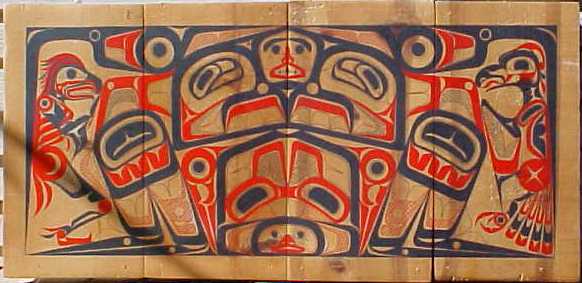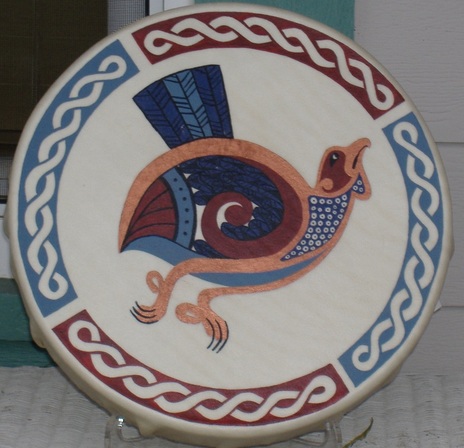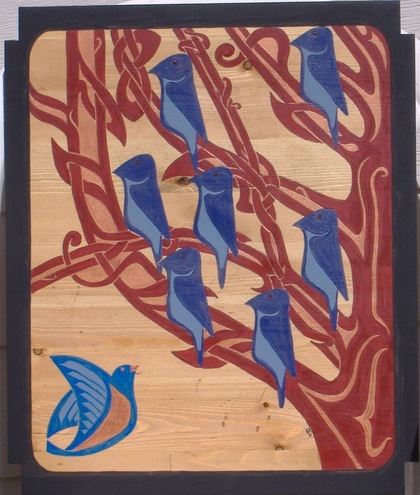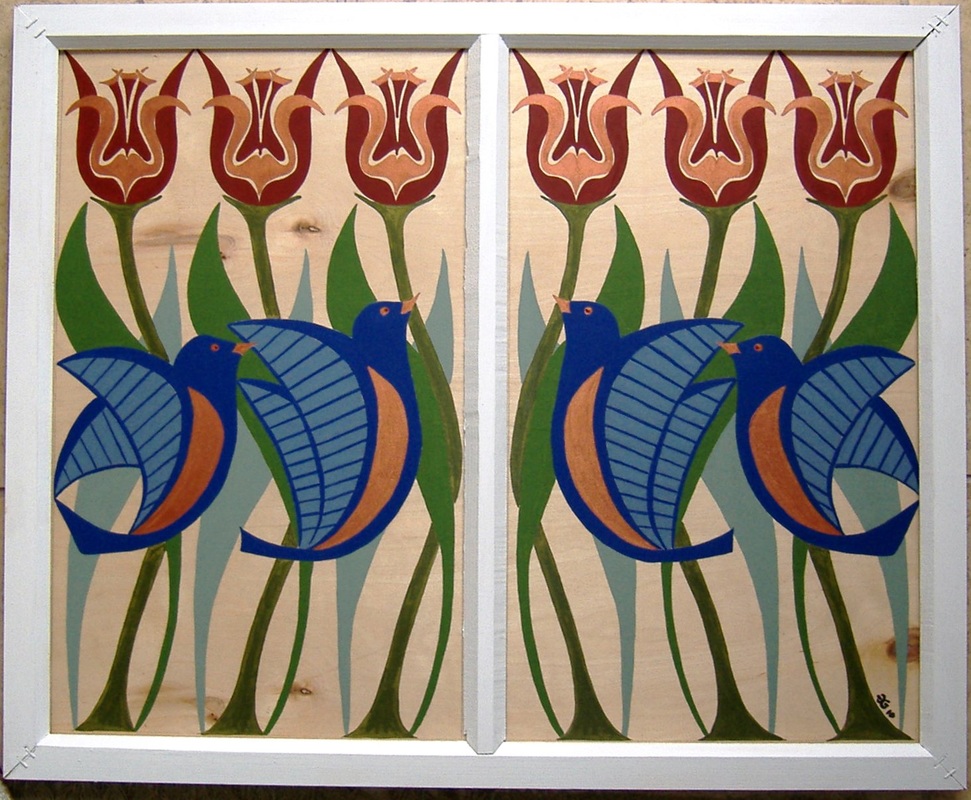Concurrently, I was learning more about Makah (and Northwest Coast Native) culture and art through involvement with my students and the Neah Bay community. I saw many prints, paintings, and carvings representing birds, but all had cultural significance and were much more that purely decorative works of art. They were visual keys to rights and privileges owned by individual families and had a cultural component that I could never achieve. However, many of my first paintings included thunderbird motifs as I was trying to learn the two-dimensional Northwest Coast art style.
When I began to incorporate Celtic art into my designs, I turned to the Book of Kells for inspiration and ideas. In particular, I studied many designs including bird motifs and the Eagle of St. John, and all added to my learning. Again, these bird motifs symbolically had cultural significance, but in this instance were directly connected to medieval Christianity. The Capercaillie Drum I painted in 1995 was the first attempt to blend Northwest Coast Native art with Celtic design elements gleaned from the Book of Kells.
When I became familiarized with the Arts & Crafts Movement, I continued to add levels of meaning to my choice of painting bird motifs. British architect and designer Charles Francis Annesley Voysey stressed symbolism and meaning in his designs. To Voysey, birds were “a joyful symbol of unspoilt nature” (Isabelle Anscombe in Archibald Knox by Stephen A. Martin, ©2001, page 99). He saw the eagle as “the highest flier and furthest seer”. To him eagles were representative of aspiration and revelation; “the heavenward quest” (see CFA Voysey, Wendy Hitchmough, ©1995, pages 142-143). This supported my belief in birds, through their ability to fly, as symbolizing the interfaces between heaven and earth. Two other British designers also played a large part in influencing my designs: Archibald Knox and M.H. Baillie Scott.
Archibald Knox has greatly influenced my art over the years. Knox’s personal symbol was a bird, and he used it in many forms. The ones that interested me the most were the birds he drew for the Douglas Secondary School Book of Remembrance. One particular page illuminated by Knox lists the names of those from the school who served in the Great War. Knox’s “silent birds” sit on the names of those who died in the war (see page 174 in Stephen A. Martin’s Archibald Knox, ©2001). I used Knox’s “silent birds” in my 2011 painting Patiently Waiting to symbolize the spirits of the dead.




 RSS Feed
RSS Feed